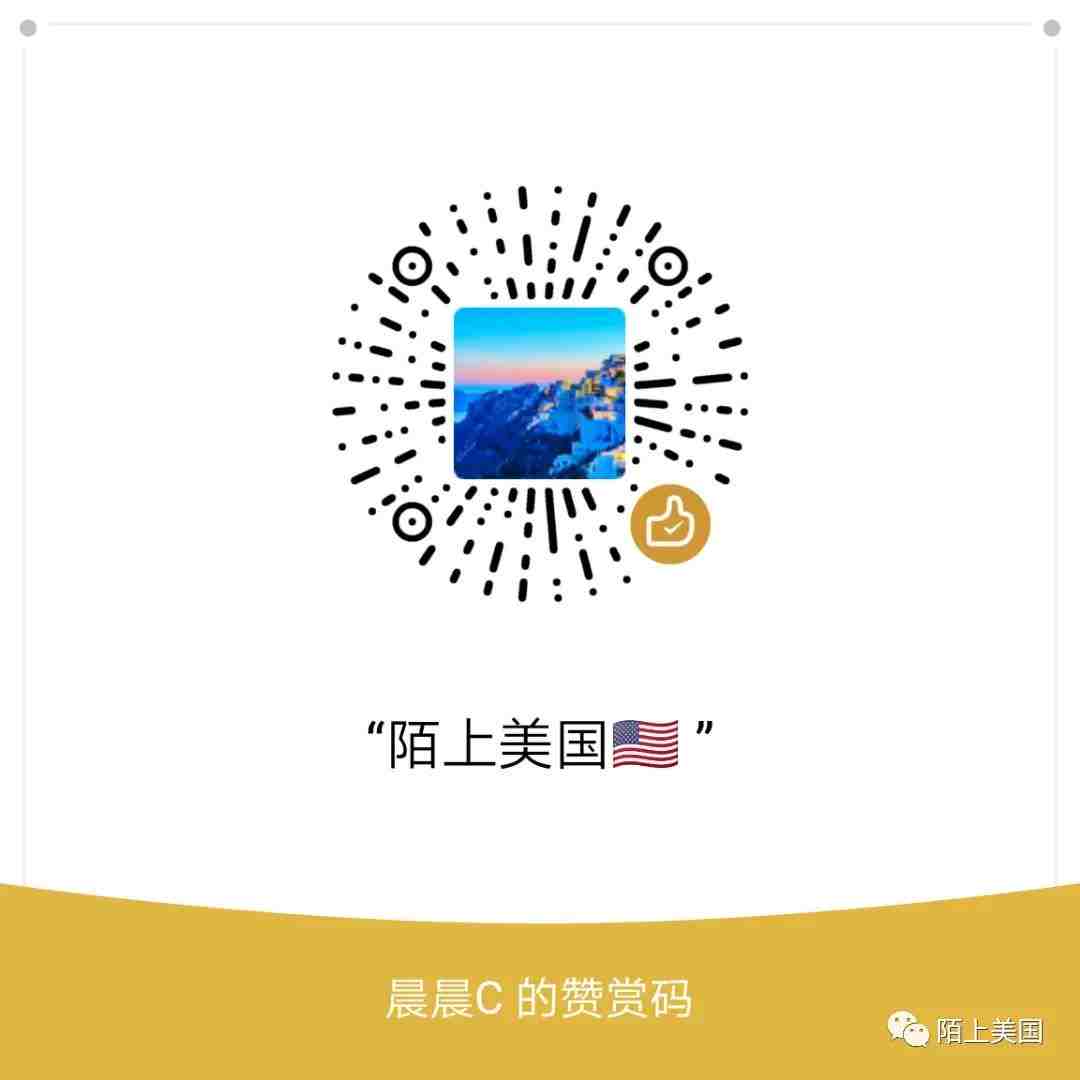美移民律师界“教父”库兹班撰文反S386绿卡改革

星期三
陌上美国 欢迎关注
欢迎关注

原文链接:https://medium.com/@ailasouthflorida/congress-is-about-to-end-immigration-of-skilled-workers-in-the-us-e25d8f1bc5c8
国会或将粉碎技术人才的美国梦

作者:Ira J. Kurzban(伊拉·库兹班) 是美国最有影响力的移民律师之一,他的书被称为移民律师的“圣经”。
翻译:进击的爽姐
咔咔草根反S386志愿者小组Chuck郭律师等校对
以下是全文翻译:
近期我们目睹了移民的双重劫难——一方面,特朗普白宫正在通过非法手段和政策粉碎难民和那些寻求更好的生活的人的希望;与此同时,国会或将严重扰乱,甚至终结,高等技术人才本可以在可预见的将来实现的移民梦。让人出离愤怒的是,国会竟然从未就此政策的立法效果举行过任何公开听证会!
At the same time the Trump White House is crushing the hopes and aspirations of asylum seekers and those seeking a better life in the U.S. through illegal practices and policies, the Congress is about to seriously disrupt, if not end, immigration of high skilled workers into the U.S. for the foreseeable future. And they are doing it without every having a hearing on the effects of the legislation!
时间回溯到今天七月。当时众议院以迅雷不及掩耳之势通过了HR1044法案,并误导性地美其名曰“高等技术移民平权法案”。此立法活动进行已久。它是给科技产业的一个馈赠——技术公司给印度员工办理永久居留权,而后者将会用光未来十余年内“技术移民”类别的所有签证名额。这项法案在两党支持的情况下顺利通过——一些民主党人希望帮助科技行业的朋友,同时很多共和党人希望严格限制依赖绿卡的就业机会。然而,该法案通过的最主要因素,则在于其毁灭性后果并不广为人知。对此我深表遗憾,因为这是一项非常糟糕的政策。
现在是时候向民众揭露真相了。
With lightning speed and without a single hearing, the House of Representatives passed H.R. 1044 back in July — the misnamed “Fairness for High Skilled Immigration Act”. This legislation has been around for years; a gift to the tech industry to grant permanent residency to Indian nationals, allowing them to use all available visas in the skilled worker categories for most of the next decade. Partly because some Democrats want to help friends in the tech industry while many Republicans hope to severely limit employment based green cards, but mostly because this legislation’s actual effect is not widely known, the bill has had bipartisan support. But it is terrible public policy. It’s time to speak out.
多年以来,IT领域的印度雇员一直在抱怨他们尴尬的移民身份——他们长期受困于美国大门边缘,无法成为合法的永久居民。他们的抱怨不无道理,但他们的处境绝非意外。大家都非常熟悉IT业界雇用依赖临时签证的永久居民的商业模式。目前的排期时间已经超过10年。我们来算一下:仅在EB-2这个需要雇主支持的签证领域,在每年发放了40040个移民签证的情况下,已经有55万雇员在苦苦等候绿卡申请被批准,而其中51.2万人来自印度。H. R. 1044(及其参议院对应法案S.386)终结了基于国别的绿卡发放。这样一来,在短暂的过渡期之后,几乎所有EB-2签证都将发给印度申请者!请注意,这项立法并没有在任何领域增加任何一张绿卡。
For many years, Indian nationals in the computer fields have rightly complained that they are being held in limbo rather than becoming lawful permanent residents. This was never an accident. IT employers have a business model of hiring permanent immigrants on temporary visas. The current waiting time for residency is over 10 years. Do the math: in just one of the employment based categories (EB-2) allocated 40,040 immigration visas a year, there are already 550,000 nationals waiting for residency, of which 512,000 are Indian nationals. H.R. 1044 (and its Senate counterpart S.386) end per country distribution of green cards, which after a transition period, would essentially give all the visas to Indian nationals. This legislation does not add a single green card for any category.
有关上述问题的大量的错误信息和彻头彻尾的谎言正在广泛传播。其中一种说法是,发放绿卡的“国别上限”制度是造成绿卡申请者长久排期的罪魁祸首,“国别上限”政策严重歧视在印度出生的申请者。
事实并非如此。
A great deal of misinformation and outright lies have been spread about these issues. One is the claim that the backlog is the result of the “per country cap”, which (it is said) discriminates against people born in India. That is not true.
对各种移民法案的前世今生,我们移民律师有更精准的理解。所谓的“国别上限”方案颁布于1965年。它实际上是一种资源分配方式,用以确保美国对来自所有国家的移民开放,而并非针对任合一个移民来源国。当前有关“国别上限”的争论呈严重两极化,不得不说这正是IT雇主蓄意散布谣言的结果。这样的局面实在是一个巨大的讽刺——正是1965年建立的国别上限分配制度帮助了大量印度和许多其他国家的人实现了移民的梦想。被“国别上限“制度取代的配额制度,明确地歧视欧洲以外的所有国家(包括印度),甚至在欧洲移民内部也存在歧视,比如当年意大利获得的签证就远远少于北欧国家。
As immigration lawyers, we know better. The per country cap — which is really distribution, and not a limit on individual source countries — was enacted in 1965 to ensure that American immigration is open to individuals from all countries. A great irony of the way the current debate is so polarized — again, the result of a deliberate strategy by tech employers to spread false claims — is that the per-country distribution system in 1965 help to create significant immigration from India and many other countries in the first place. The “per country cap” replaced a quota system that explicitly discriminated against all nations outside of Europe (including India), and even within Europe, e.g. Italy got far less visas than northern European nations.
这项考虑不周的法案(H. R. 1044和S. 386)的支持者经常提出这样的问题:“为什么10亿多人口的印度和30万人口的冰岛有一样的绿卡分配上限?”我们知道它(国别上限)的运作方式并非如此:误导性的“上限”言论声称“没有哪个国家能获得超过申请总数的7%”。然而,事实上,在2007年至2017年的10年间,印度公民获得了280523张就业绿卡,而中国、韩国和菲律宾,则分别只获得了130248张,115274张,和84792张。中国的人口基数要大得多,然而在印度出生的雇员获得的就业绿卡数量却是中国出生的雇员的两倍还多。印度获得比世界人口最大国家的两倍还多的绿卡——这怎么可能证明“国别上限”的分配方案歧视印度申请人呢?
Proponents for this ill-considered legislation often ask “Why should India with more than a billion people be limited to the same cap for green cards as Iceland, with 300,000?” We know that’s not how it works: the misleading “cap” rhetoric claims that no nation can get more than 7% of the total. Yet over the 10 years from 2007–17, Indian nationals received 280,523 employment-based green cards; Chinese nationals, 130,248; South Korean nationals, 115,274, and Philippine nationals, 84,792 green cards. China has a substantially larger population, yet workers born in India received more than twice the number of employment-based green cards than workers born in China. That India has gotten more than twice as many green cards as the world’s largest nation does not indicate a system biased against people born in India.
而冰岛呢?2016年,冰岛只获得了57张就业绿卡。2017年,这个数字下降到42。零和立法的支持者声称,现有的“国别上限”导致冰岛浪费了9800张就业的绿卡。实际上,正是这个所谓的“上限”体系每年向包括印度在内的高需求国家发放那个“上限”中的多于9700张绿卡。这个“国别上限”系统使用的是一种并不通过限制绿卡来满足需求的“上限”。“零和立法”支持者声称的“从印度人手中扣留”的数以万计的移民签证,实际上正是到了印度人的手里。
And Iceland? In 2016, it got 57 employment-based green cards. In 2017, 42. The ostensible “cap” which supporters of this zero-sum legislation claim sets aside 9,800 employment based green cards for Iceland, actually distributes more than 9,700 of that “cap” every year to high-demand countries — including India. The per country distribution system uses a “cap” that does not limit green cards to ensure they go to meet demand. Tens of thousands of immigration visas that the proponents of this legislation claim are withheld from India, actually go to Indians.
绿卡申请者大量积压并不是“国别上限”的分配方案造成的,而是就业绿卡的总数决定的。根本没有足够的签证满足所有申请者的需求。怎么解决这个问题?答案是不要为每年发放的那几张签证而争吵;答案是政府要创造更多的、有利于美国经济发展的签证。简而言之,我们需要更多的签证。
The backlog isn’t caused by per-country distribution. It’s caused by the overall number of employment-based green cards. There simply are not enough visas for the demand. The answer is not to fight over the few visas given each year; the answer is to have a larger number of visas to the benefit of the U.S. economy. Simply, we need more visas.
H. R. 1044和S. 386试图提升每个国家/地区的上限的做法并不能解决问题。事实上,他们只是让事情变得更糟。原因如下:
H.R. 1044 and S.386 in lifting the per country cap do not solve that problem. In fact, they simply make it worse:
首先,其他领域的高技能人才——比如医疗保健和医学研究这两个对我们国家具有重大意义的领域——将被拒之门外超过十年。而在基础科学、工程、化学、物理、人工智能、气候变化和许多其他领域,那些非印藉的潜在美国移民必定灰心丧气,他们将不再有动力来到美国为治疗癌症和帕金森氏症、应对气候变化和创造全新的产业做出贡献。
First, high skilled workers in other areas — like health care and medical research, two areas of great significance to the nation — will be shut out of residency for well over a decade. Potential new Americans in basic science, engineering, chemistry, physics, artificial intelligence, climate change and many other fields who are not Indian nationals will be discouraged from ever coming to the U.S — people working to cure cancer and Parkinson’s, to fight climate change and create whole new industries.
其次,如果 H. R. 1044和S. 386大行其道,在印藉申请人用光所有签证后,每个申请者的居留等待时间都将从10年(印度人现在的等待时间)增加到17年。
Second, the waiting times for residency under H.R. 1044/S.386 will go from 10 years (for Indians now) to 17 years for everyone after Indian nationals use the visas.
第三,即使是已经在排期的印度人也不会都拿到绿卡。因为根本就没有足够的绿卡。
Third, even the Indians already backlogged will not all get green cards. There simply aren’t enough.
第四,这项立法还可能损害DACA(Deferred Action for Childhood Arrivals)和TPS(Temporary Protected Status)接受者。如果特朗普成功终止了这两个项目,那些一直在等待向就业签证过渡的人将会突然面临不得不马上离开美国、在境外等待美国绿卡长达17年的困境!
Fourth, this legislation would also potentially harm DACA and TPS recipients. If Trump is allowed to end these programs, those recipients who have been waiting for a transition to employment-based visas would suddenly be faced with having to leave the country and wait for green cards outside of the U.S. for up to 17 years!
文后所附图表只是将S.386和H.R.1044的语言应用于美国国务院和移民局的官方数据 (此法可能在适当的立法听证会公开进行)。即使把类别之间的变化计算在内,对印度人来说,现在的10.5年的延迟也会在10年内延长为17年,而对全世界来说,不论哪一个移民来源国,不论哪一种职业和技能范畴,都会如此。而就业绿卡申请的积压总数也会从如今的80多万增加到2029年的110万。
The attached charts simply apply the language of S. 386 and H.R. 1044 to official State Department and USCIS data, as would be done publicly through a proper legislative hearing. Even counting shifts between categories, what’s now a 10.5 year delay for Indians will become a 17 year delay in ten years — and include the whole world: every source country, every profession and kind of skill. The total backlog for employment-based residency goes from over 800,000 today, to 1.1 million in 2029.
因此,零和方法不是解决方案。国会不应该让印度国民与整个世界对立。国会应该制定一个制度,产生更多的永久居留签证,并让医疗保健(特别是在农村地区)和科学研究获得优先等级。这些制度的目的应该是鼓励技术人才留在美国。
So a zero sum approach is no solution. Congress should not pit Indian nationals against the rest of the world. Congress should enact a system to make more permanent residency visas available, where healthcare (ad particularly in rural areas) and scientific research are acknowledged as priorities, a system that encourages skilled workers to remain in the U.S.
定义了美国移民制度的埃利斯岛模式,意指永久居留权和成为公民的直接途径。如果美国在十九世纪用如今二十一世纪的移民法案对待亚历山大·贝尔,那么他就会在加拿大而不是在美国发明电话。
The Ellis Island model that defines United States immigration means permanent residency and a direct route to citizenship. If the U.S. had treated Alexander Graham Bell in the 19th century the way this legislation would treat him in the 21st, he’d have invented the telephone in Canada.
参议员兰德·保罗(Rand Paul)提出了旨在解决实际问题的《BELIEVE法案》。他提出的具体措施包括将签证数量增加一倍,终止分配签证时把高技能雇员的配偶和子女计算在技术移民配额内的荒谬方法,为农村地区的卫生保健工人提供一定程度的优先级,并允许这些人提前申请居留权。参议院也进行着其他讨论,比如共和党和民主党都集中讨论了在不伤害世界其它地区技术移民的前提下,实际解决印度H-1B雇员的绿卡积压问题。这不应该是“选IT工作者,弃护士和医生”或“选印度人而放弃整个世界”的局面。国家利益所在是向这些人迅速发放绿卡——这些人具备美国需要的合格技能,并且不会取代同类的美国工人。
Senator Rand Paul has introduced legislation to actually solve the problem — the BELIEVE Act — by doubling the number of visas, by ending the ridiculous process of counting spouses and children of high skilled workers when allocating visas, by giving some limited priority to health care workers in rural areas, and by allowing early filing of residency for such high skilled workers. There are other discussions in the Senate involving both Republicans and Democrats focused on actually solving the green card backlog for Indian H-1B workers without hurting the rest of the world. This should not be a case of choosing IT workers over nurses or doctors; Indians over the rest of the world. The national interest is to give green cards quickly to those beneficiaries who have qualified with their skills and shown that they are needed without displacing qualified American workers.
作为移民律师协会的成员,我们有责任澄清争议中的事实。
美国从世界各地获得高技能移民,从事各种有价值的职业。技术雇主希望切断这一切,原因仅仅是因为不是来自印度的IT工人。单一行业试图以牺牲医疗保健、尖端研究以及整个世界为代价,来操纵美国移民政策。不管是否会悬崖勒马,国会都至少应该在决议之前举行公开听证会。
As members of the immigration bar, it is our responsibility to make the facts of these controversies clear.
The United States gets highly skilled immigrants from all over the world, in a wide range of valuable professions. Tech employers want to cut off all of that, simply because it is not IT workers from India. A single industry wants to sole-source American immigration policy at the expense of health care, cutting edge research, and well, the whole world. Congress should at least hold a hearing before going over the cliff.





请点击文末左下角“阅读原文”查看动态更新的最新行动指南
HR1044/S386法案更多相关文章:


欢迎请作者和小编喝杯🍵



点击左下角“阅读原文”查看最新行动指南

最新评论
推荐文章
作者最新文章
你可能感兴趣的文章
Copyright Disclaimer: The copyright of contents (including texts, images, videos and audios) posted above belong to the User who shared or the third-party website which the User shared from. If you found your copyright have been infringed, please send a DMCA takedown notice to [email protected]. For more detail of the source, please click on the button "Read Original Post" below. For other communications, please send to [email protected].
版权声明:以上内容为用户推荐收藏至CareerEngine平台,其内容(含文字、图片、视频、音频等)及知识版权均属用户或用户转发自的第三方网站,如涉嫌侵权,请通知[email protected]进行信息删除。如需查看信息来源,请点击“查看原文”。如需洽谈其它事宜,请联系[email protected]。
版权声明:以上内容为用户推荐收藏至CareerEngine平台,其内容(含文字、图片、视频、音频等)及知识版权均属用户或用户转发自的第三方网站,如涉嫌侵权,请通知[email protected]进行信息删除。如需查看信息来源,请点击“查看原文”。如需洽谈其它事宜,请联系[email protected]。